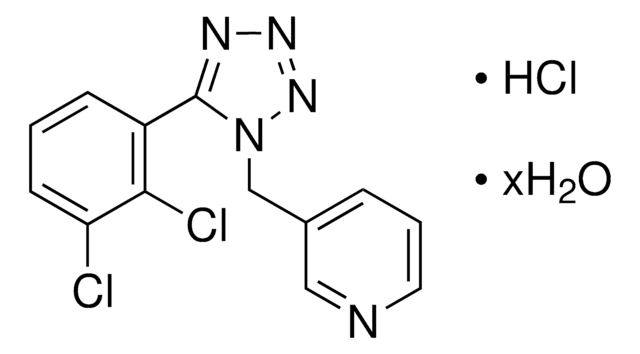MABF2049
Anti-LTBR Antibody, clone 3C8
clone 3C8, from rat
Sinónimos:
Tumor necrosis factor receptor superfamily member 3, Lymphotoxin-beta receptor
About This Item
Productos recomendados
origen biológico
rat
Nivel de calidad
forma del anticuerpo
purified immunoglobulin
tipo de anticuerpo
primary antibodies
clon
3C8, monoclonal
reactividad de especies
mouse
técnicas
flow cytometry: suitable
isotipo
IgG1κ
Nº de acceso NCBI
Nº de acceso UniProt
Condiciones de envío
ambient
modificación del objetivo postraduccional
unmodified
Información sobre el gen
mouse ... Ltbr(17000)
Descripción general
Especificidad
Inmunógeno
Aplicación
Flow Cytometry Analysis: A representative lot detected LTBR in Flow Cytometry applications (Yi, T., et. al. (2013). Elife. 2:e00757).
Agonist or Inhibitor Analysis: A representative lot detected LTBR in Agonist or Inhibitor applications (Dejardin, E., et. al. (2002). Immunity. 17(4):525-35).
Agonist or Inhibitor Analysis: A representative lot detected LTBR in Agonist or Inhibitor applications (Vondenhoff, M.F., et. al. (2009). J Immunol. 182(9):5439-45).
Agonist or Inhibitor Analysis: A representative lot detected LTBR in Agonist or Inhibitor applications (Yi, T., et. al. (2013). Elife. 2:e00757).
Agonist or Inhibitor Analysis: A representative lot detected LTBR in Agonist or Inhibitor applications (Banks, T.A., et. al. (2005). J Immunol. 174(11):7217-25).
Inflammation & Immunology
Calidad
Flow Cytometry Analysis: 1 µg of this antibody detected LTBR in one million NIH/3T3 cells.
Descripción de destino
Forma física
Almacenamiento y estabilidad
Otras notas
Cláusula de descargo de responsabilidad
¿No encuentra el producto adecuado?
Pruebe nuestro Herramienta de selección de productos.
Código de clase de almacenamiento
12 - Non Combustible Liquids
Clase de riesgo para el agua (WGK)
WGK 1
Certificados de análisis (COA)
Busque Certificados de análisis (COA) introduciendo el número de lote del producto. Los números de lote se encuentran en la etiqueta del producto después de las palabras «Lot» o «Batch»
¿Ya tiene este producto?
Encuentre la documentación para los productos que ha comprado recientemente en la Biblioteca de documentos.
Nuestro equipo de científicos tiene experiencia en todas las áreas de investigación: Ciencias de la vida, Ciencia de los materiales, Síntesis química, Cromatografía, Analítica y muchas otras.
Póngase en contacto con el Servicio técnico